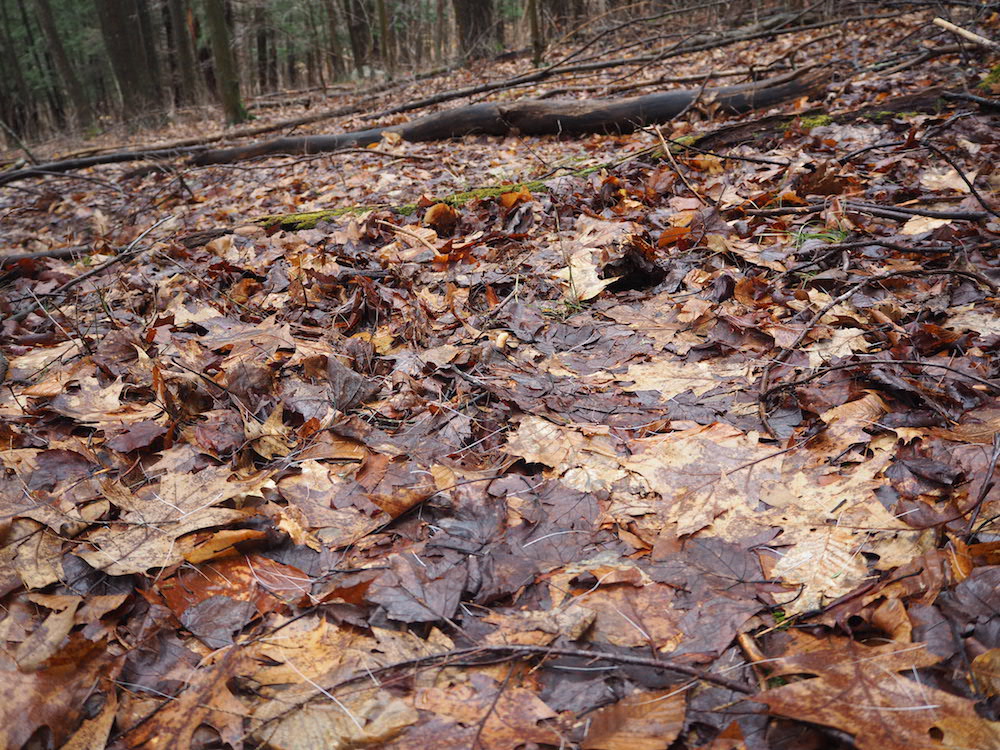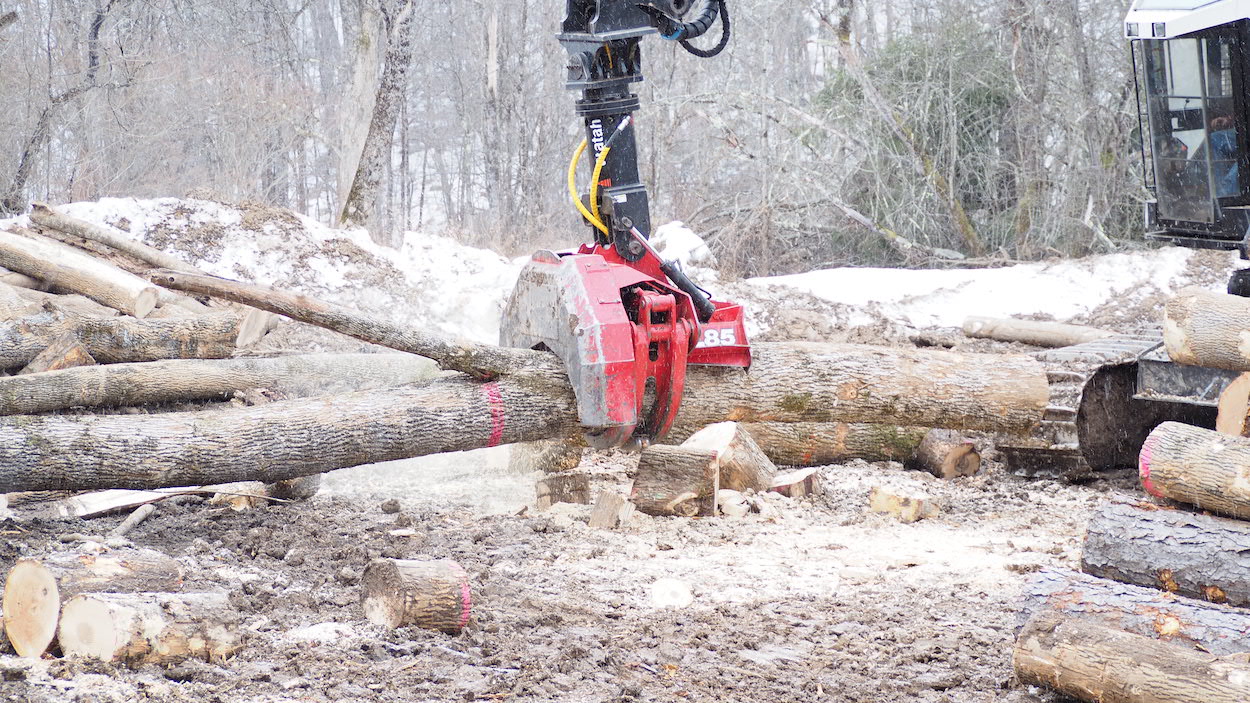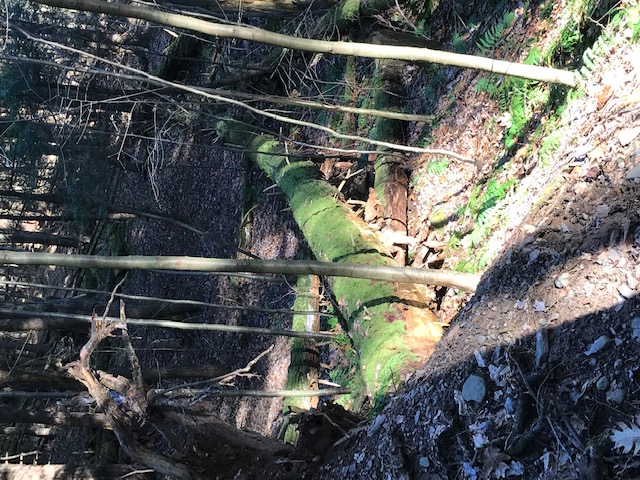It was January 2, 2023. Another deer season had just wrapped up and I have to admit it was not a very successful one in terms of being efficient with putting meat in the freezer. By my count at the end of bow season, I had been out over 30 times without getting a deer. However, this made it all the more joyful when I finally got a doe during rifle season.
For me, the end of deer season brings a mixture of emotions. After chasing deer for three months, there is some sense of relief at the prospect of rest and reflection. At the same time, it can be a bit daunting to figure out what you’re going to do next.
For me, the remedy is to get back out in the woods and go deer scouting. It helps solve that question of what’s next and I like to think that offseason scouting - finding new hunting spots and reviewing familiar ones - will pay off the next year. It’s also just good fun to follow deer sign around through fields, streams, and wooded hills without the pressure of actually hunting them.Back to January 2, 2023. Unseasonably warm weather had just melted the foot of snow we got in the Catskills in mid-December. The leaves were soggy and flattened, with the top layer just beginning to crunch underfoot thanks to some abundant sunshine. I slowly scouted my way through a stream bottom and up a steep woodland slope, mapping out deer trails and marking points of interest with onX, a GPS mapping app used by hunters and hikers.
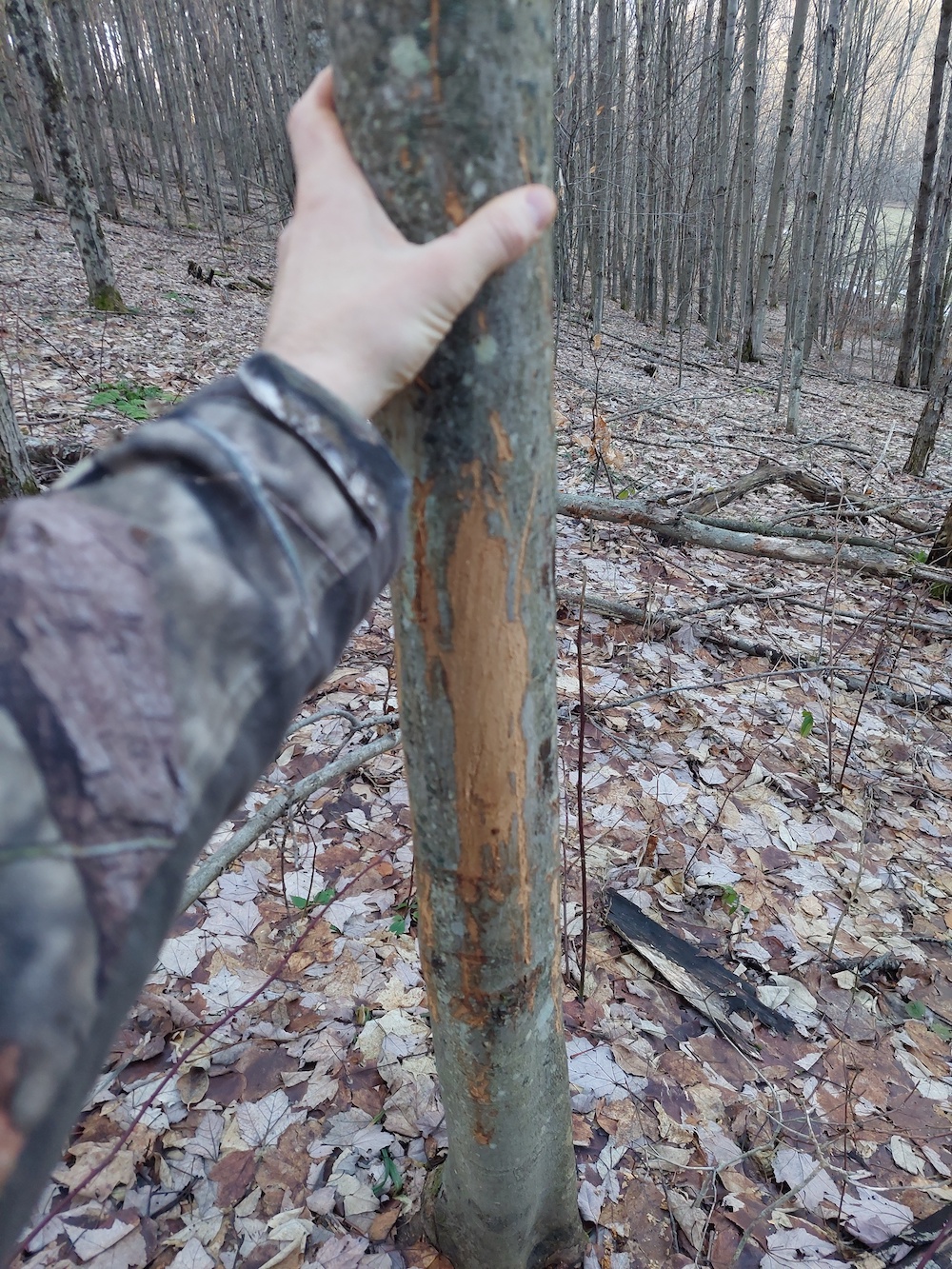
I was walking on the contour, just below the hillcrest, when I spotted a log with some serious spiderwebs. I went over for a closer look and discovered it was not spiderwebs at all.

I recognized it as tufts of deer hair, but everything about the scene was so strange to me. For one, deer don’t shed hair in the middle of winter. This much hair this time of year is usually associated with a deer kill, but I didn’t find any blood, signs of a scuffle, or a deer carcass. In fact, I don’t recall seeing wildlife tracks of any kind in the wet leaves.
It was also odd to find deer hair all over the log like that. When I find deer hair, it’s almost always associated with a bed. But deer bed down on the ground, not on top of logs.
Back at home, I found a web page from bowhunter-ed.com that explains how deer hair characteristics (length, thickness, color, and straightness) can be used to identify where it came from on a deer’s body, with the aim of helping hunters to decipher shot placement when they aren’t sure where they hit. Here is a link to the page: https://www.bowhunter-ed.com/pennsylvania/studyGuide/White-Tailed-Deer-Hair-Can-Give-Clues/30103902_10248/
I reviewed the photos I had taken of the deer hair and determined that they were mostly tufts of long white hair. There were fewer tufts of long dark hair, with some being white at the base.
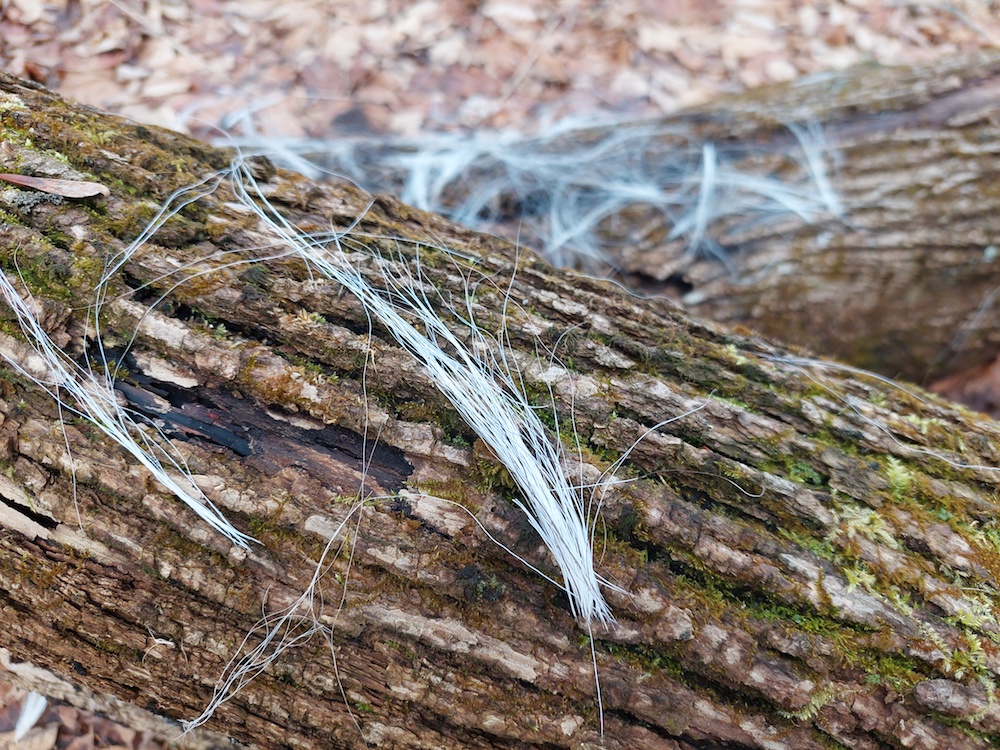
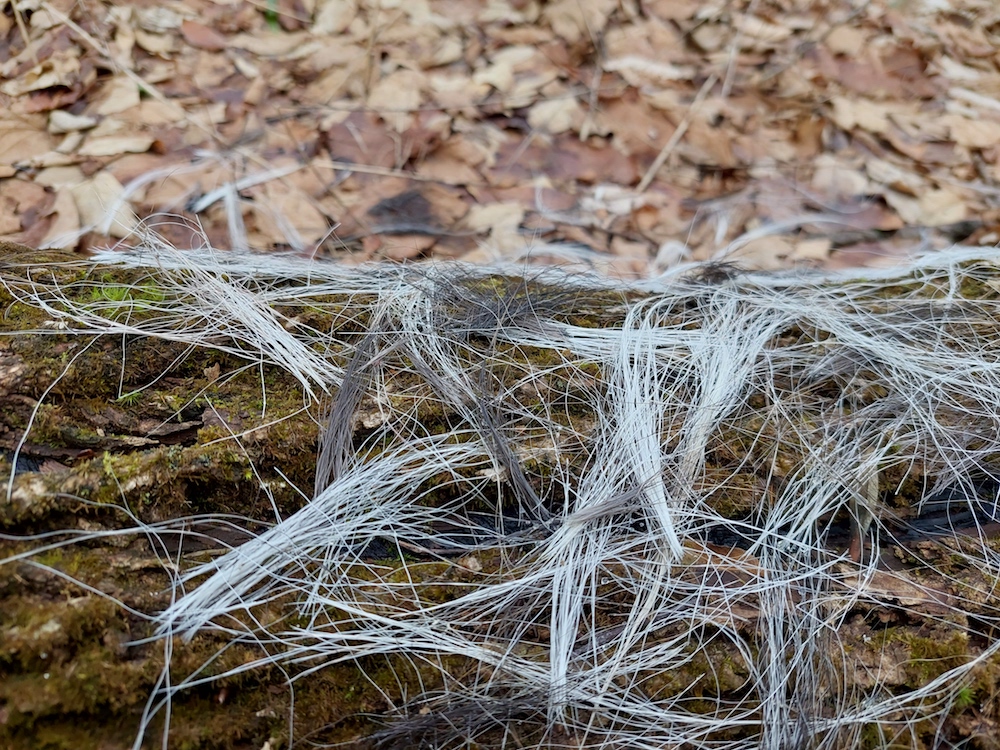
If I had to guess, I’d say most of this the hair came from the bottom of the rib cage, as indicated by “a mixture of white and dark brown hair that is straight, moderately long, and thick.”
I did a Google search for “deer hair loss in winter” and came across this article from the Maine Dept. of Inland Fisheries and Wildlife: https://www.maine.gov/ifw/fish-wildlife/wildlife/living-with-wildlife/diseases/deer-hair-loss.html. It offered several explanations, including lice, mange, and a bacterial skin infection known as dermatophilosis, or rain rot. Lice and mange can cause intense itching, which leads deer to rub and groom themselves excessively.
In summary, I think a deer might have tried to scratch a whole-body itch on this log. If so, hopefully the deer’s condition improves before it loses much more of its winter coat.
